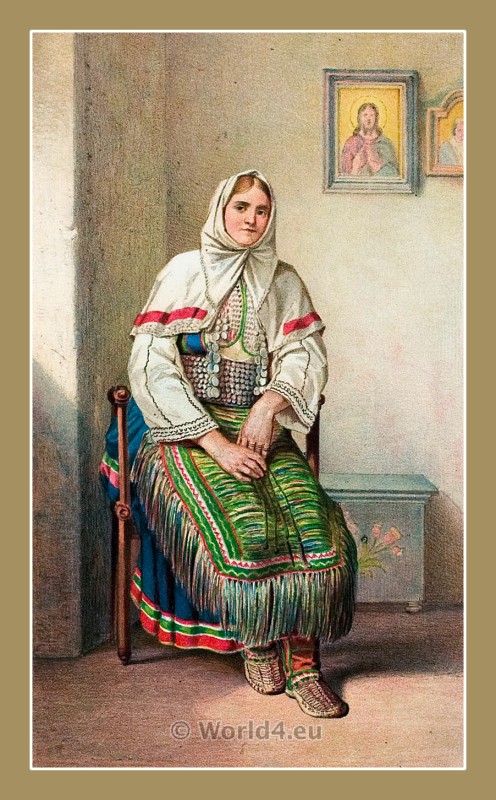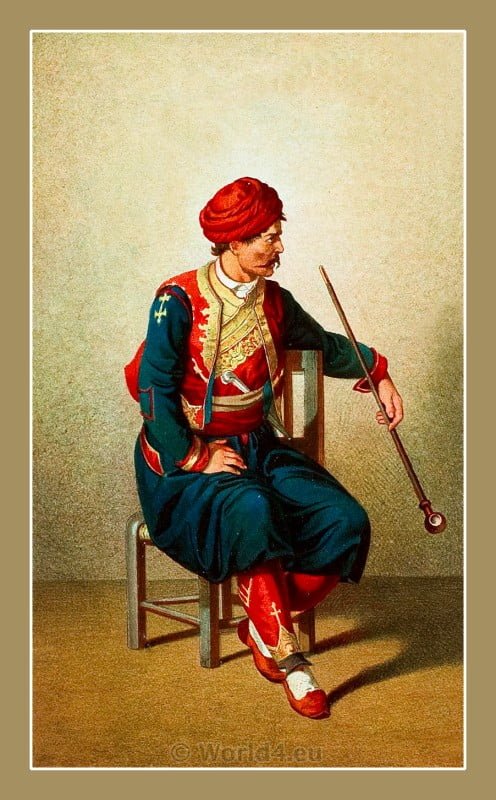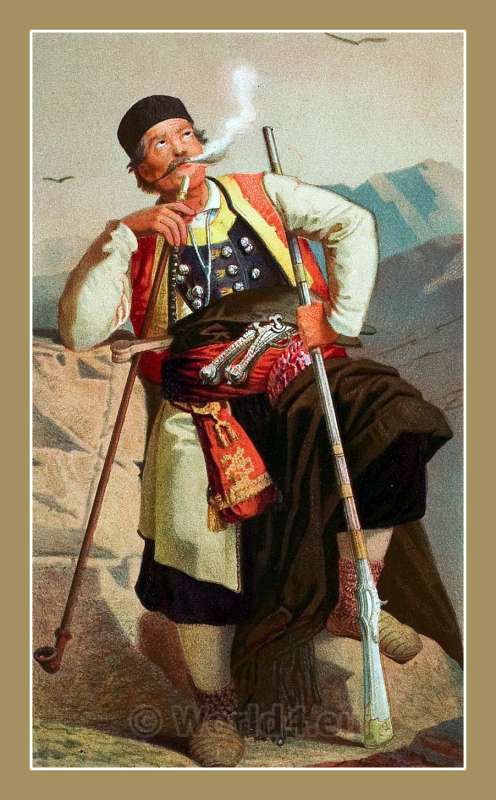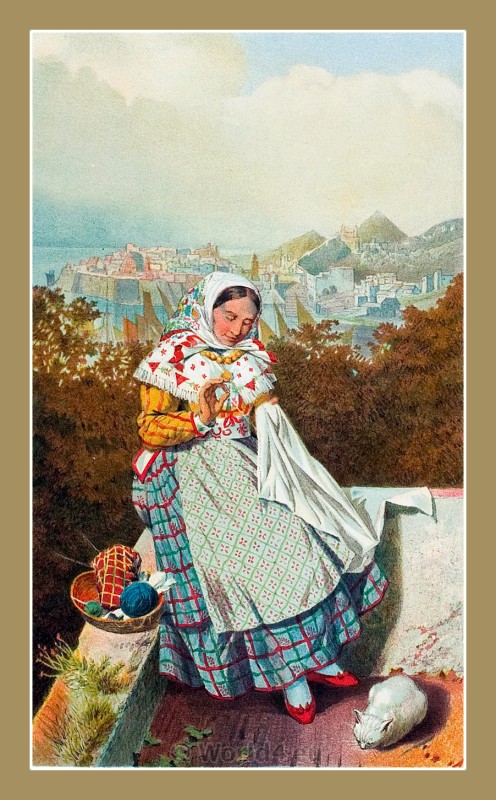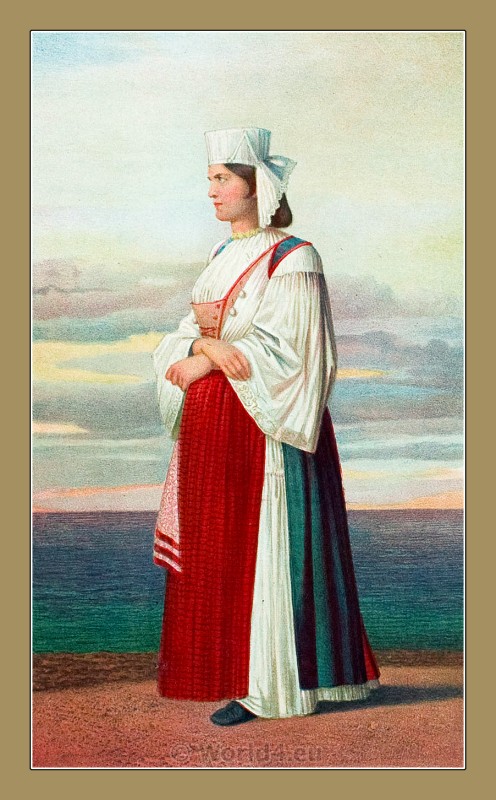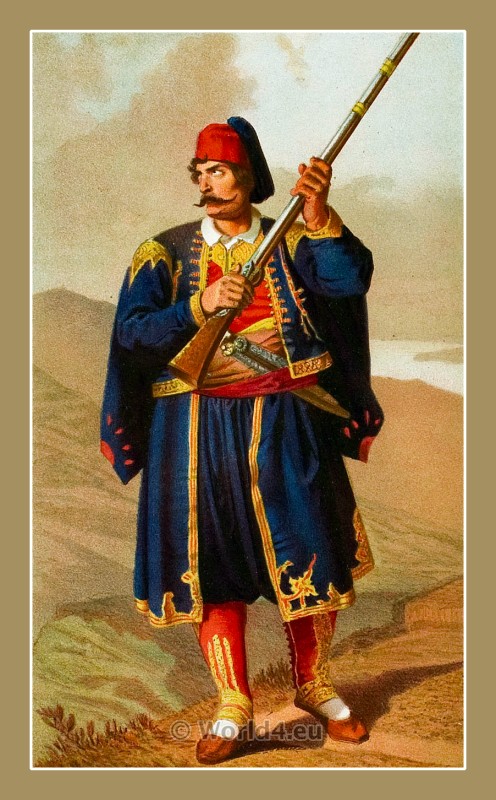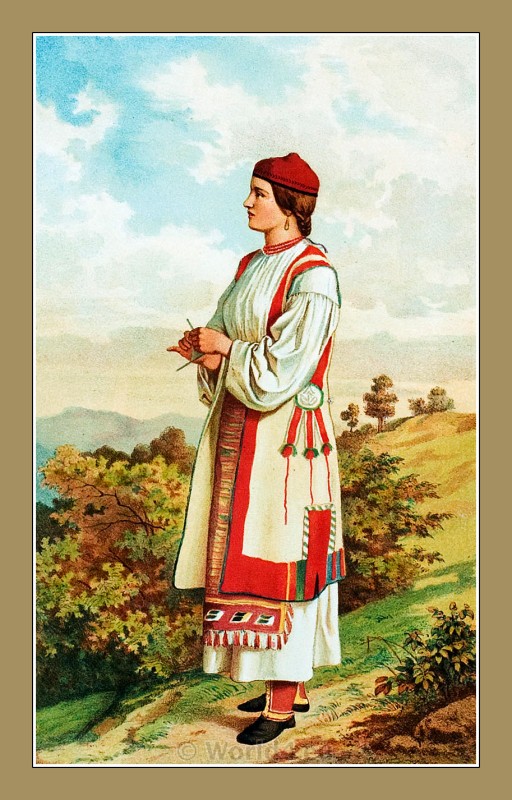
A woman in traditional clothing from Vrlika, Croatia in 1870.
(DJEVOJKA IZ VRLIKE)
Vrlika is a town in Dalmatia in the southern part of Croatia, which belongs to the Split-Dalmatia County.
The known history of Vrlika begins in the 6th century when Croatians migrated to the region and formed a village on the banks of the Cetina River below Dinara Mountain.
In the 9th century, the oldest church in Croatia with a belfry was built in this area and still exists today. The culture of these times was under the influence of the Franks, as indicated by archaeological excavations during this period.
The medieval history of Vrlika ended with the Ottoman invasion. Many of the inhabitants then left for Olib Island in the Adriatic Sea.
During the war for the independence of Croatia, Verlicca was occupied by the Serbian militias of Krajna and the Yugoslav People’s Army, at the arrival of which the inhabitants of Croatian ethnicity left the city en masse. After Operation Storm (in Croatian Oluja) in 1995, the Croats regained the city and it was the Serb inhabitants who left the area.
The town is situated in the Dalmatian countryside on the national road D 1, not far from the lake Peruća, which was created by the damming of the river Cetina. Sinj lies 40 km southeast, Knin about 30 km northwest of Vrlika.
The Serbian Orthodox monastery Dragović is located near the Koljane district.
Source: The Serbs in the Adriatic. Their types and costumes. Published 1870-1878. Brockhaus Leipzig Germany.

Continuing
Discover more from World4 Costume Culture History
Subscribe to get the latest posts sent to your email.

